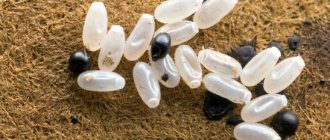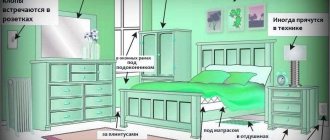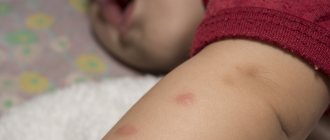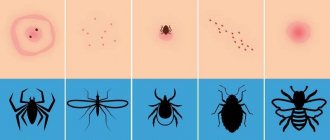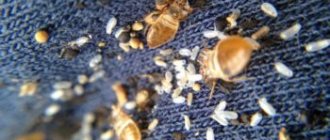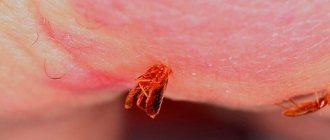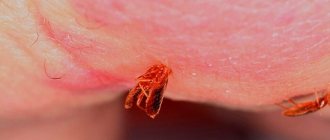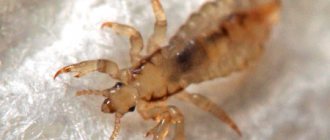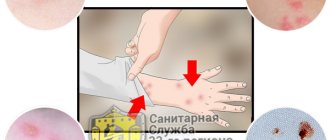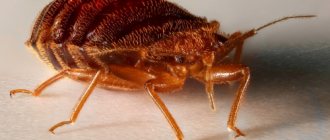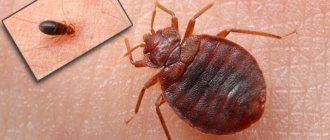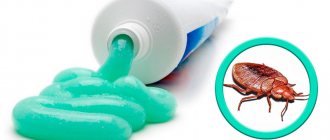- By Vil Malinoshevsky
- About bedbugs
Bedbug eggs are the most important problem, because of which they cannot always be destroyed indoors the first time. Even if the owners of the apartment have taken measures to ensure that parasites do not get in from neighbors, and even if bedbugs are poisoned in a private house, it is because of the eggs that most often it is necessary to carry out repeated treatment.
Bedbug eggs mixed with empty shells and excrement
The point here is that there are no insecticides on the market today that would definitely and completely kill the embryos in bed bug eggs. And almost always, after treatment, it is the bedbug eggs that remain viable.
Consequently, if at the time of treatment there are previously laid eggs in the room (and they almost always are), then after treatment they will hatch into larvae that will have a chance to survive, start biting people, grow and restore the population here.
However, this problem can usually be easily resolved. If you know the specifics of the development of bedbug eggs and larvae, it is relatively easy to destroy them all, including the larvae, which only hatch later. Moreover, in most cases this can be done in one treatment and there is no need to deal specifically with bedbug eggs in any additional way. What do you need to know for this?
Bedbug eggs in an ordinary apartment
Firstly, bedbug eggs are present in all rooms in which these bedbugs more or less regularly bite people. If there is more than one bedbugs, they will multiply and eggs will appear in certain places. Just because you don't see or find them doesn't mean they aren't here.
If the “lid” is closed on the egg, it means that the larva is still developing inside.
Secondly, bedbugs lay the bulk of their eggs where it is damn difficult to get to them. Here, when exterminators inspect a room and prepare it for treatment, they most often find eggs in places where an ordinary person trying to destroy bedbugs on their own would not even look. Typically, masonry is located behind the baseboards, between the boards of the bed frame and sofa, behind the ceiling moldings. If bedbugs were able to get into the filling of a sofa or mattress, then the eggs will be there too.
In other words, the more difficult it is for you to inspect a place, the more likely it is that bedbug eggs will be found there. This is partly why many people don't find them. They look only where it is easy to look - at the mattress from above, at the walls of the sofa, at the same baseboard, only from above, and they see nothing. And you need to look at the seams of mattresses and sofa upholstery.
If you lift such a seam, then it is on the fold under it that you will be able to see eggs, excrement, small nymphs, and sometimes adult bedbugs. You need to unscrew the sofa or bed and inspect all the parts, including fasteners - washers, bolt heads, hinges. You need to unfasten the baseboards from the walls and look at both the baseboard itself and the wall behind it. It is also advisable to lift linoleum or laminate flooring - if there are cracks under them, there may also be eggs there. And so on - in a separate video we talked about where bedbugs can hide in an apartment. Look at it and check all these places - books, shelves, sockets, back walls of furniture, ceiling moldings, household appliances. Most likely you will find eggs.
On a note
Bedbugs cannot lay eggs on humans. They lay eggs only in quiet, hard-to-reach places where they live themselves and into which people rarely look and where the eggs are as safe as possible. There is no such security on the human body or in the body itself. In addition, in their life activities, bedbugs try to minimize contact with people, climbing onto a person’s body for a very short period of time to drink blood, and then crawling into shelters, that is, for them the feeding process is very dangerous and restless. But the main thing is that bedbugs physically cannot lay an egg in the human body; for this they do not have special stylet-shaped oviducts, with the help of which other insects (for example, ichneumon ichneumon fly) perform similar operations. As a result, there are no known cases in which bedbugs would lay eggs not only in the human body, but even on it.
Third: due to the fact that eggs are often located in very hard-to-reach places, they can be extremely difficult to get even with the means by which they can be destroyed. For example, it is impossible to pour boiling water inside the upholstery of a sofa, and somewhere in the gap between the door frame and the wall it is impossible to crush eggs even with a knife.
That is why, in most cases, it is advisable and most effective not to try to get rid of the bedbug eggs themselves, but to take measures to destroy those nymphs that hatch from these eggs. Killing these nymphs is much easier than destroying the eggs, and in most cases, a properly carried out first treatment will ensure that even after this, such hatching larvae will be destroyed.
Prevention
The following recommendations will help you minimize the possibility of infesting your home with these parasites:
- If your neighbors suffer from bedbugs, you can protect your apartment by sealing all cracks in the floors and walls, especially near pipe risers, sewer channels and garbage disposals.
- Places adjacent to communication channels should be treated more often with special chalks and dusts.
- When buying a secondary home, it is better to get rid of the old parquet, as it is a favorite hiding place for bedbugs due to many cracks.
- Unnecessary, old things should be thrown away, as they serve as a place for insects to form nests.
- Having been on a business trip or on vacation, living in a hotel or unfamiliar housing, upon returning home, treat your bags with hot steam and send your clothes to the wash.
- Purchasing used furniture and items is always fraught with the appearance of uninvited guests; careful inspection and processing is necessary.
The work of destroying the larvae on your own requires time and patience. Knowing how to get rid of bedbug eggs in an apartment, you can use all available methods. If the event was successful, but the neighbors still have a problem, then in a couple of weeks you will have to repeat the disinfestation. Therefore, the procedure for getting rid of parasites should be carried out jointly, but you can use the services of professionals.
Conclusions from Tikhon: Fighting bedbugs is a collective event and you will get the greatest effect by teaming up with your neighbors. After all, they often spread quite quickly and over a large area.
If you have experience dealing with bed bugs, please leave a comment below. Perhaps he will help someone in solving this problem. Strength and perseverance to you, and remember that it is always easier to prevent than to fight later.
Happiness to you and your home.
What do bed bug eggs look like?
The photo below shows bed bug eggs:
Bedbug eggs on days 6 (left), 8 (center) and 10 (right) of development
Here they are shown at a very close zoom. It can be seen that they are whitish in color, elongated in length. Their length is about a millimeter, their diameter is about a third of a millimeter. The egg in which the embryo develops is translucent, with a visible embryo inside. The shell from which the larva has already hatched is simply dull white.
It is important to understand that the eggs in the photo look completely different from how they look on a real sofa or mattress. The photo is usually taken with a strong zoom and magnification so that the egg on it can be comfortably seen. And in real home conditions, from a distance of 30-40 cm, eggs are lost against the background of debris in a bedbug nest, against the background of fabric or white plaster.
Bedbug nest on sofa frame
Basically, for the sake of simplicity, think of these eggs as being like small, long grains of rice. Each female lays 250-500 eggs in her life, and she does this every day, laying 2-3 eggs per day.
It is therefore obvious that eggs are almost never found alone. After being saturated with blood, the female does not feed for 3-4 days and remains in one shelter, laying 10-12 eggs here. The result is a kind of clutch, although the insect does not make any systematic arrangement of the eggs and does not try to somehow hide or disguise them.
Typical picture when separating the upholstery of an infected sofa from the frame
And yes, do not confuse bedbug eggs with their excrement. The latter look like black dots, and the eggs are white and elongated. In this case, the egg during oviposition is enveloped in a sticky secretion, which hardens over time and the egg becomes glued to the surface. Therefore, simply brushing the masonry off the mattress or sofa will not work. They can only be scraped off with a fingernail or some other tool.
How long does it take for eggs to hatch?
It is important to know how many days it takes for a new generation of bedbugs to hatch; they hatch from eggs approximately 5-24 days after they are laid, and sometimes after 3 days. Such a large interval is noted because the rate of development of embryos in eggs depends on temperature and air humidity.
The higher the temperature, the faster the eggs mature. The favorable ambient temperature for eggs is from +21 to +30°C. The development of embryos in such conditions occurs quickly, and they are born within 3-7 days.
Temperature +10°C slows down the development of embryos. The larvae appear only after 2-3 weeks.
If the temperature drops to 0°C, the process stops completely and the embryo dies within a week.
If the humidity is very low or high, the larva will not be able to break through the shell and will also die.
Modern living conditions are most favorable for egg development, which usually occurs within 10 days.
How long do bedbug eggs live?
Temperature is very important for pest reproduction and has the greatest influence on egg laying. The optimal temperature for laying eggs is 26.7 degrees Celsius. The lower the temperature, the fewer eggs per day, but extreme heat also reduces the number of eggs in the life cycle, since bed bugs do not survive very well in very high temperatures.
When the bug is in the larval stage, it matures in approximately 1.5-2 months under normal conditions and the presence of food, but at subzero temperatures this process can take up to three months. At each stage of maturation it is delayed for different periods of time.
If you calculate that the average female lays 500 eggs in 4 months, and with an infestation there can be more females per male, you will quickly realize that eliminating bed bug eggs is extremely important as this amount of eggs can accumulate in a very short time.
Biology of bedbug eggs in numbers: timing, quantities and optimal temperatures
One egg hatches into one larva. That is, these are eggs, and not egg capsules, like cockroaches. The development period of the egg is from 4 to 19 days, depending on the air temperature.
Under normal home conditions at a temperature of 20-25°C, eggs develop in 7-12 days; this period is longest in wild populations of bedbugs living in caves at a constant temperature of about 14°C.
Bed bugs that feed on bats are wild relatives of indoor parasites
The larva, hatching from the egg, does not feed for 1-2 days and lives off the protein reserves preserved in its body from the period of embryonic development. She then starts looking for a person to feed on. If she succeeds, she sucks on blood and after a few more days sheds her coat, increasing in size.
Why are eggs so difficult to destroy?
The egg itself protects the embryo very well from various external influences. Through the shell of the egg there is very little gas exchange with the environment and toxic substances do not penetrate inside. Even if the outside of the egg is sprayed with a product and the product dries on it, the larva will not come into contact with the drug when emerging from the egg.
The fact is that it hatches through the upper narrow side of the egg; there is even a special cap that the larva pushes out to get out. So she pushed the lid out, got out and left, without even getting dirty in the product that was on the surface.
Actually, this is exactly what happens after disinfestation. The handler sprays the product over all the places where bedbugs are found, including all the eggs (if he is a good exterminator who has previously opened all these places). Adult bedbugs and nymphs that were in the apartment at the time of treatment die. At the same time, there are eggs in the apartment that survived the persecution.
Consequently, after disinfestation, larvae begin to hatch from those eggs that were laid first, and gradually over a week or two, larvae hatch from all eggs. After 2 weeks, there are no developing eggs left in the room. Either egg shells or larvae remain here. There are no adult bedbugs here that could lay new eggs - we destroyed all of them during processing.
Please note: we are now talking, let’s say, if not about an ideal situation, then about a very good one, in which we are absolutely sure that new bedbugs are not getting into the room from the neighbors. That is, this is either a separate private house, or an apartment with excellent repairs, where bedbugs cannot get in from neighbors and into which they were accidentally brought by people.
If neighbor bugs can get into the room, then even before the larvae hatch from all the eggs, adult insects can get in here and begin laying new eggs. But let’s say we really have a room where bedbugs don’t get into.
Peculiarities of bedbug reproduction
Bedbugs that have reached sexual maturity are prone to active reproduction. Each female is capable of laying up to 12 eggs per day, and throughout her life she lays approximately 500 eggs.
Such fertility ensures a rapid increase in the colony of blood-sucking parasites.
Insect eggs can be found even on vertical surfaces, which is possible due to the presence of a sticky substance.
Their shape externally resembles a cylinder with a cap at the end, their size does not exceed 1 millimeter, and their color varies from yellowish to transparent white.
The female begins laying eggs a couple of days after she drinks blood. Their number in the masonry is affected by the temperature in the room.
The most suitable temperature for laying eggs and for the normal development of larvae in the future is considered to be a temperature that ranges from 20 to 35˚C.
Higher or lower temperatures make the development process slower. And it stops when the temperature rises to +45˚С or drops to -10˚С.
The emergence of larvae from eggs under good environmental conditions occurs approximately 5 to 25 days after the female lays eggs.
And the entire cycle, consisting of the stages “egg - larva - adult insect,” lasts from 1 to 3 months. The duration of this period depends not only on the temperature in the room, but also on the amount of food.
What happens to eggs after conventional processing (and does anything happen at all?)
If there were not very many bedbugs before treatment, and the baiting was carried out with a product that has a residual effect, then all the young larvae die from this product. These larvae are very small, crawl slowly, and when they hatch from the eggs, they immediately land on surfaces on which a layer of dried preparation remains. Since they move slowly, they come into contact with this drug for a long time, become heavily soiled in it, it affects them and they die. If the treatment was carried out really well, then all newly hatched larvae are destroyed in this way. That is, people do not even have time to see these newly hatched larvae and repeated disinfestation is no longer required.
Indeed, problems arise when either there were a lot of bedbugs before the first treatment, or during treatment, agents without a residual effect were used (as a rule, various folk remedies), or the treatment itself was carried out poorly. In all these cases, some of the larvae survive.
If there were a lot of bedbugs, they left a huge number of eggs, many larvae hatched from these eggs, and some isolated nymphs avoided contact with the product, or were resistant to it, and did not die. If the product has no residual effect, then all the young bloodsuckers will run through it without harm to themselves, will grow and eventually mature and begin to reproduce.
The same thing will happen after poor-quality treatment: many surfaces will remain untreated and the larvae simply will not come into contact with the product. And therefore, they will not die.
In all these cases, after 5-6 days, the bugs begin to bite people again. They do not bite very aggressively and not very often, since there are few of them and they are all small larvae that bite weakly and little by little. However, these bites are felt, and if they appear, the treatment must be repeated.
Appearance of bedbug eggs
The shape of the egg resembles a grain of rice, which will remain hollow after the nymph emerges.
Eggs are identified by the following characteristics:
- elongated oval shape;
- small bend;
- transparent, white or light yellow color, depending on the stage of embryo formation and making it invisible;
- a sticky and viscous liquid that covers the shell and allows the egg to stick to any surface;
- length 0.5-1 mm;
- the cap at the tip is designed to allow young individuals to come out.
Sometimes the eggs of bloodsuckers are confused with their feces, which are smaller in size and dark in color.
The essence and procedure for reprocessing
This treatment is much simpler than the first. Simply because such small larvae are much more sensitive to the drugs used and die faster, plus they all concentrate near the sleeping areas. They are very small and cannot move quickly like adult bedbugs, and therefore after biting they hide in close proximity to a sleeping person - on mattresses, on sofas, on beds, and the like.
For example, nymphs of the first instar simply cannot leave behind the baseboard - they will not have time to reach a sleeping person from here in a whole night. Therefore, all this young generation is in and near the sleeping places, where it is quite easy to poison them all.
The most important thing in such re-processing is to choose the right time. On the one hand, at the time of its implementation, larvae should already hatch from all the eggs, on the other hand, by this time not a single nymph should have time to turn into an adult bug.
The development period of eggs is 12 days, nymphs turn into adults in 28-30 days. At this age - about a month after hatching - they begin to lay eggs themselves. Therefore, the treatment must be carried out exactly within this period - from 12 to 28 days after the first disinfestation.
In practice, it is better to do this as early as possible. Just so that the parasites bite less people. We carry out repeated treatments only if necessary, if bedbugs begin to bite people after the first treatment, and approximately 2 weeks after the first.
According to our internal statistics for the entire DisinCity company, the need for this arises in approximately 17% of cases.
Simply put, for every 6 treatments after which the bedbugs disappear immediately, there is one such treatment, after which the room needs to be treated again. This is fine.
Where to find oviposition
Habitats of bedbugs in the house
It is very easy to understand that bedbugs have settled in the house; the first and main sign of proximity to bloodsuckers is the appearance of red bites on the human body, reminiscent of paths. The bug senses its victim only by the heat emanating from its body and finds it by the exhaled carbon dioxide. An adult is capable of making several punctures of the skin until it is completely satiated.
Interesting!
Often the victim does not even feel that the bug is biting him, as the adults inject a special anesthetic substance into the skin before they begin to suck blood. The situation is different with larvae: they do not have an anesthetic fluid, so their bites are painful and more powerful.
Other signs that uninvited guests have appeared in the house can be found if you look closely at things. In the morning, bloody spots are often visible on the bed; black grains, similar to dirt, the chitinous shells of larvae, accumulate in the cracks and corners near the bed. Black dots are bedbug excrement, but many people, due to their ignorance about insects, confuse parasite excrement with their eggs.
How to poison young nymphs
There are nuances here regarding the means used for processing. We remind you: there are no drugs on the market today that are guaranteed to destroy bedbug eggs. Some drugs seem to show an ovicidal effect, but no evidence can be found, about other products the sellers themselves say so, but, again, they cannot prove anything, but in fact, a drug that would undergo full testing and show an ovicidal effect, No.
Therefore, for treatment, you need to purchase not a product from which the seller promises an ovicidal effect, but a product that remains active after drying, that is, has a residual effect. The majority of such drugs are - almost all organophosphorus compounds, neonicotinoids, pyrethroids poison bedbugs after drying.
Exterminators against bed bugs use organophosphates or neonicotinoids, sometimes more exclusive drugs. For household use, this is Karbofos, for example, Fufanon, Executioner, Get.
Modern drugs called Dichlorvos, as well as such popular drugs as Tsifox or Medilis Cyper, contain cypermethrin or other pyrethroids and it is better not to use them against bedbugs.
It is necessary to treat the apartment with preparations based on FOS so that the product remains on the maximum number of surfaces - on the back walls of furniture, on baseboards, on the bed frame, even on the mattress - wherever bedbugs can come into contact with it. You will cover the same mattress with a clean sheet, you will not come into contact with it yourself, but the bedbugs will run on it. And they will be poisoned.
It is important not to wash off the product from surfaces after treatment. The longer it stays here, the more bedbugs will die from it and the more likely you will not have to poison them again.
Ultrasonic bedbug repellers
Despite the popularity of such devices, their use is ineffective. If you believe user reviews, people choose advertised repellers because for many this option for solving the existing problem is the simplest and does not require any additional actions: neither processing furniture, nor boiling clothes, nor looking out for every centimeter of the room.
And although manufacturers claim that parasites and their offspring are not able to resist electromagnetic and ultrasonic radiation, scientists have a different opinion. These devices only affect mosquitoes. Ultrasonic repellers are not suitable for killing bedbugs.
...and is it possible to kill them without insecticides?
Eggs can definitely be killed by high temperatures. Adult bedbugs die at +45 degrees in 45 minutes, and at +50 in 10 minutes. It is not known how quickly eggs die at these temperatures, but boiling water and steam from a steam generator or a simple iron kills them instantly. That is, if you use a steam generator to treat a mattress with eggs on it, no one will hatch from these eggs.
Another thing is that you can’t get to many places where eggs are located either by steam or by boiling water. For example, behind the same skirting boards, if they are not removed, or under linoleum. And, for example, books on shelves cannot be treated with boiling water at all, although bedbugs often settle there, including in bindings. That is why, despite such effectiveness, it is usually not possible to destroy all bedbug eggs in a room using either boiling water or steam.
If eggs are found on bed linen, this linen can be washed in water at 55-60 degrees. With this type of washing, the eggs will die, and in the washing machine they will be washed off from the fabric.
But mechanically crushing the eggs or simply removing them from the furniture will not work. When laid, they are covered with a sticky secretion, which sticks to the surface. This protects them from simple swiping, for example. It is also difficult to crush them due to their small size - somewhere under a fold of upholstery or a seam of a mattress, it is simply impossible to press them with your finger. But the main thing is different: it is almost impossible to find all the eggs in the apartment, because they can be “scattered” literally in all the small crevices and are not noticeable everywhere.
How to destroy
To understand how to destroy the eggs of domestic bugs, you should remember that they are resistant even to insecticides. The poison from the room quickly disappears, and the bedbug larvae continue their life activities.
When killing parasites, the most effective way is to use low and high temperatures. If embryos have settled in things, you can take them out into the cold or wash them in hot water, iron them, or pour boiling water over them.
A steam generator is suitable for upholstered furniture; it is advisable to take a model with steam temperature control . For large individuals, 45-50 °C is sufficient, and for larvae, 70-80 °C is needed.
The mechanical method is less relevant, since it involves independent identification of masonry and their destruction.
The use of insecticide must be strictly controlled. Before doing this, you should seal all food products, get gloves and a respirator. Microencapsulated products such as Get and Delta Zone are often used.
Fufanon and Karbofos are no less popular for killing bed bug larvae; their demand is explained by their price, but these drugs have a pungent, poisonous odor. The stronger ones from this group are Sichlor, Tetrix, Sinuzan, but they are more expensive.
Diazinon boasts its power, but due to excessive toxicity it is used extremely rarely.
All destruction methods have their advantages and disadvantages.
- Thermal is not available for all surfaces and you need to know exactly where to lay it. But at the right temperature conditions, the embryos die on their own.
- Mechanical is ineffective for large areas of damage, but by crushing the masonry you can be sure of its destruction.
- The chemical method is quite toxic and requires time for processing and weathering. People and animals should not be present in the home at this moment, otherwise it may harm them. This method requires treatment at intervals of several weeks, since if not all eggs are destroyed, then after leaving the cocoon the individual will continue to exist, creating new colonies.
Video
How to kill bedbugs in 5 minutes
